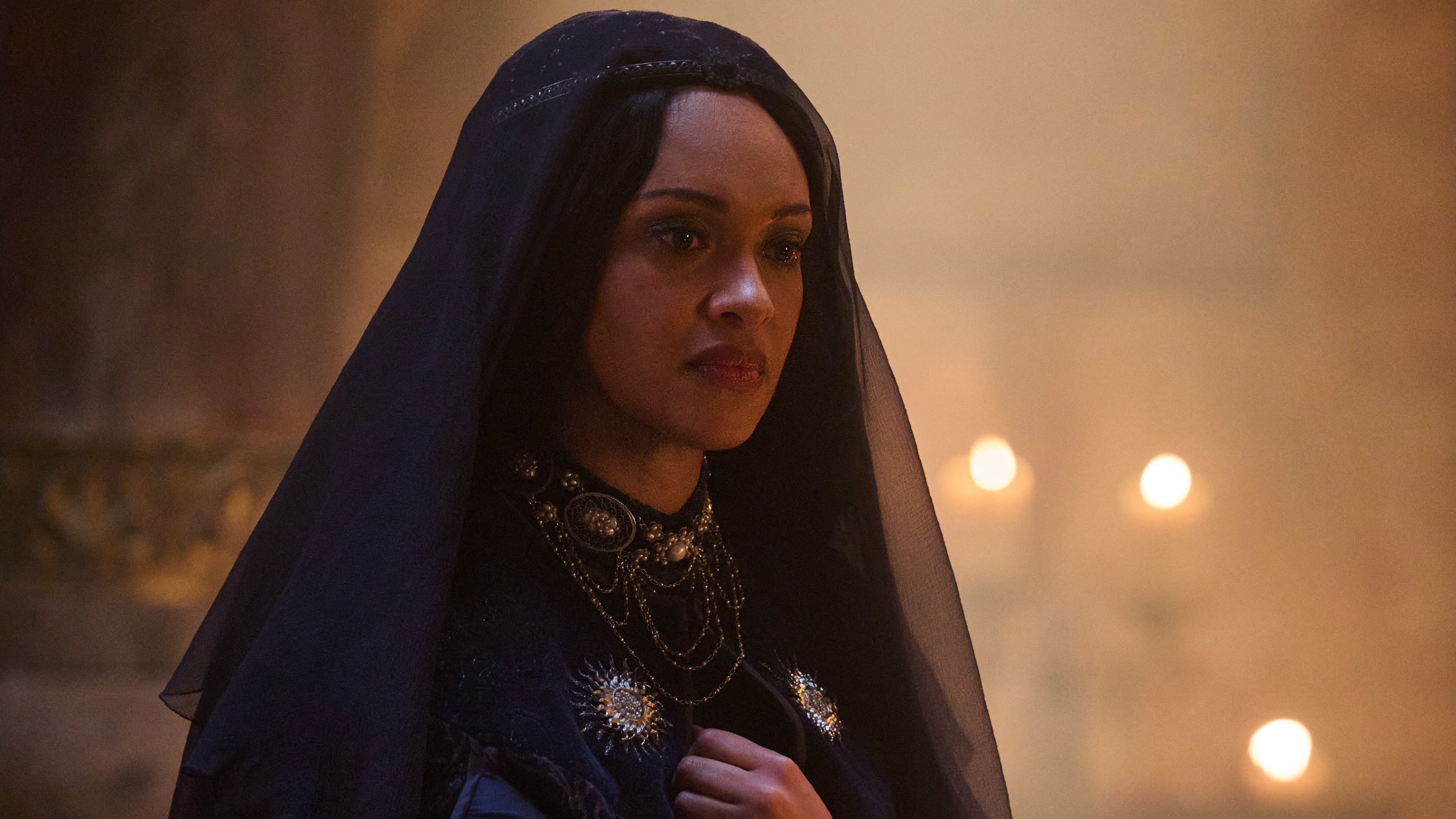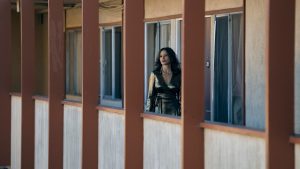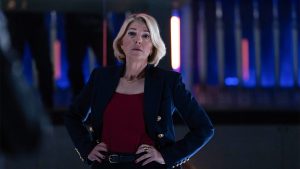
Last year we went on a flying visit to Middle-earth, otherwise known as the set of Amazon’s The Lord of the Rings: The Rings of Power season two. Beyond learning about the epic Second Age battles to come between Elves and Orcs, we also had a chance to set sail across the Great Sea to the island of Númenor where darkness grows in the kingdom of Men after the death of King Tar-Palantir. During our tour, we learned a few things about the power struggles, drama, and betrayals to come.
The first season was shot in New Zealand, but production shifted to primarily to the UK for season two—with a bit of help from hotter places, including Tenerife for the desert scenes in the land of Rhun, where the Stranger and Nori will be spending most of their time. But although many of the behind the scenes crew have newly joined the show for season two, their overall commitment to creating a spectacularly rich environment hasn’t changed. And the same beauty that marked out season one can be seen most clearly when we visit the show’s fanciest set, the royal court of Númenor.
Stepping into the royal court at Númenor feels like stepping into a church or a temple from the Roman Empire. The entrance is flanked by pools of real water—shallower that they were in season one, according to actor Trystan Gravelle (Pharazôn), because some people fell in. Step through the arched entrance and you find yourself in a huge, round space, with raised areas all around the edges and the throne of the kingdom looming up in front of you. Lines of gold paneling rise up around the walls and everywhere is richly decorated. The feeling of being completely immersed in Middle-earth is only broken if you tilt your head back to look directly at the ceiling, which is of course a black hole filled with studio lights.
It’s a very appropriate look for Tolkien’s Númenor. Although the island kingdom is inspired by the Greek myth of Atlantis, the story of the fall of Númenor is more about Imperial Roman-style politicking in the court, something we will see more of this year. Showrunners Patrick McKay and JD Payne promise that season two in Númenor will bring “a civil war and a battle of ideologies.”
As Gravelle puts it, “not only have the Númenoreans lost the [battle] that they went over [to fight] with an expeditionary force, but they’ve been embarrassed as well in that the Queen Regent has lost her sight.”
Cynthia Addai-Robinson, who plays Queen Regent Míriel, adds that with increasing civil strife in the kingdom, “there’s a, no pun intended, real sea change because there’s these two directions in which society can go. The time of relative peace is over and things are shifting.”
While Míriel is the rightful heir to the throne of Númenor, fans of J.R.R. Tolkien‘s books know that the question of succession is a much more complicated one than it would appear, especially when other parties scheme to take the kingdom of Men in a different direction. That power struggle will eventually lead to some very dark days for Númenor. We’re speculating here, but it’s probably safe to expect quite a bit of court intrigue in season two.
As far as the stage where part of the succession drama will unfold, the throne room will look mostly as it did in the first season, as the whole set was shipped over from New Zealand. But there are some small changes to look out for. Most of them won’t be visible on screen, and Addai-Robinson mentions that “whenever I see the sets and you look up close, I always have that appreciation for how much work goes into the detail and for things that the camera maybe doesn’t necessarily pick up.”
“We added more gilded details on the panels, and the back wall had a bit more of a uniform turquoise tone to it. And then the columns were gilded,” set decorator Tina Jones explains. “It’s more about finishes and texture really than anything else. The floor is a bit more detailed. We copied the lights from season one, but each chandelier had about 18 different individual lights. It looked very, very busy. So we just enlarged them and made them bigger. It’s like taking those season one sets and just pushing them to the limit.” Overall, though, Jones emphasized that the whole team loved the original designs from the New Zealand crew, saying, “If I had designed season one, I would probably have designed it in exactly the same way.”
The same is true of the costumes the Númenoreans will be wearing. Addai-Robinson tells us, “We all spoke lovingly of Kate Haley’s original [costume] designs and in season two [costume designer] Luca Mosca is continuing in this tradition. And I still continue to have epic, amazing costumes. It’s a department that I spend a lot of time with and so that hasn’t changed.”
We got a chance to see some of those costumes up close, all of which have been handmade and are intricately detailed (we had to be careful not to step on Míriel’s long and beautiful train!). Mosca pointed out a detail on Galadriel and Míriel’s dresses that likely will not be visible on screen, but that enriches the costumes for both the actors wearing them and the audience, even if they don’t realize it. “You may not notice,” he tells us, “but the silk satin underneath has been braided, meaning the dye goes from one color to the other. It can go from light to dark, and I think it is just fantastic because it’s not in your face but it is there.”
The same attention to detail goes into hair and make-up as well, although, in Gravelle’s case, hair and make-up designer Flora Moody had one less thing to make, as he came with one hair-piece of his own—his prominent eyebrows! “[Trystan] likes his eyebrows,” Moody tells us, “and we shaped up his beard and gave him a sort of 300 Persian-esque beard, you know, a bit stronger; in this season his character is becoming a bit more powerful.”
One addition to the royal court that might be visible on screen is a small shrine that has been added in the corner of the set, making it feel even more like a temple or a church. Production designer Kirstian Milsted tells us that the design of the shrine was inspired by an Eastern European church, particularly in the scallop-shaped details around it. “I really like to build sets that people believe in,” Milsted says. “You actually believe that you’re in a real place, not a film set or TV set.”
All of these rich details give the whole space a feeling of beauty and wealth and power that matches Númenor’s upcoming political storyline perfectly. Gravelle also emphasises Númenor’s island status and how that has an impact on his character, Chancellor Pharazôn.
“I think where his mind is,” Gravelle says, “because [Númenor] has been so insular, maybe it’s time to get on the front foot with things.” Unsurprisingly, Gravelle reveals he’s done a huge amount of background research into political theory to inform the character, including reading up on leaders like Henry Kissinger and Charles de Gaulle, reading books by former foreign correspondent Tim Marshall, and a book by David Fry titled Walls that left a big impression. “It was about people who lived inside walls, and then the so-called barbarians on the outside,” Gravelle explains. “And there’s definitely a difference of perspective and how they see the world. So when you build these walls, your reputation inside those counts for nothing in the outside world. And so it’s up to you to build that again. And there comes a fear, I think, and there’s a lot to lose. And so the height that you fall from is greater.”
The sense of political theatre in Númenor’s season two storyline is also helped by how much the 360° set, which is an unusual luxury on a TV show, feels like a live theatre on the day of shooting. The space can be used for intimate scenes with a few people, but it is also big enough to fill for a crowd scene, and Jones tell us that a few big crowd scenes have been shot there.
“It’s absolutely wonderful when [the royal court] fills up. I love that. It’s like a bear pit,” Gravelle says. “I worked at the Globe Theatre [the recreation of Shakespeare’s theatre in London] for three years and it felt like that, you know, because that’s in the round [a type of theatre where the stage is surrounded by the audience]. Everything is just really lucid and you either let it swallow you up or you really give it some and take the bull by the horns.”
Addai-Robinson agrees: “It’s very evocative. You step onto that set, and you look out onto a group of Númenoreans [in] regalia. And it’s just so easy to get into that mode and really, it’s just a continuation of what we established in season one.”
Of course, not all of the action in season one will take place at the royal court. We will also be visiting the Old Quarter of the city, as the story takes us to new places and explores more aspects of Númenorean society. Patrick and Payne tell us, “We’re going into the [ideology] of the faithful and starting to set up [the question], what does their faith mean to them? And, you know, what did Old Númenor mean to these people? So that’s a whole new side of that world.”
The Lord of the Rings: The Rings of Power season two premieres on Aug. 29 on Prime Video.
The post The Rings of Power Season 2: First Look at the Drama and Betrayals Coming to Numenor appeared first on Den of Geek.




